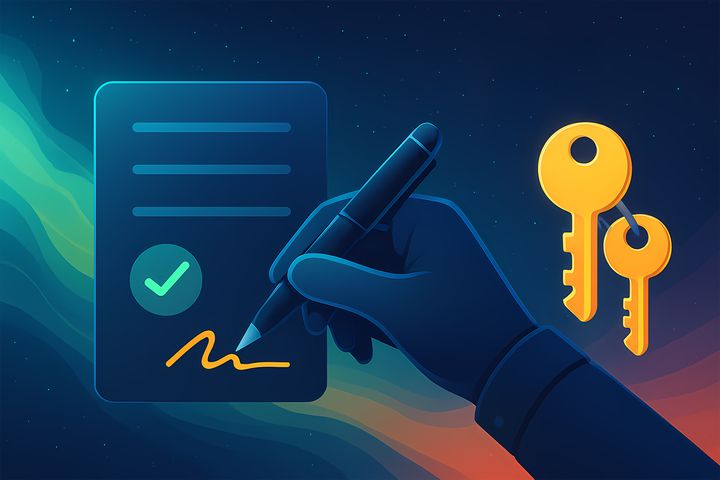Working with multiple Git identities—especially when balancing personal and professional repositories—can be cumbersome if not handled properly. Fortunately, Git provides straightforward ways to maintain distinct identities and securely sign commits using SSH.
Organizing Your Project Directories
First things first: organize your repositories clearly. Create separate directories to distinguish between your work-related and personal projects:
~/Workfor professional projects.~/Projectsfor personal endeavors.
Ensure you also update paths in VS Code and shell aliases to reflect these directories.

Configuring Conditional Git Identities
Git supports conditional configurations, allowing automatic switching between identities based on the directory context.
Step 1: Create a Work-Specific Git Config
Make a separate config file (~/.gitconfig-work) dedicated to work-related repositories:
[user] name = Your Work Name email = you@company.example.comStep 2: Conditionally Include the Work Config
Edit your main ~/.gitconfig to include your work-specific configuration conditionally:
[user] name = Your Personal Name email = you@personal.example.com
[includeIf "gitdir:~/Work/"] path = ~/.gitconfig-workWith this setup, Git automatically applies your work identity whenever you operate within the ~/Work directory, and defaults to your personal identity elsewhere.
Commit Signing with SSH Keys
Why SSH instead of GPG? Simplicity and convenience. Using SSH keys for commit signing streamlines the process significantly.
Generate a Dedicated SSH Signing Key
Create an SSH key specifically for signing your commits:
ssh-keygen -t ed25519 -f ~/.ssh/git_commit_signing -C "commit-signing@yourdomain"Configure Git to Sign Commits
Edit your global Git configuration to enable commit signing with the newly generated SSH key:
[commit] gpgSign = true[user] signingKey = ~/.ssh/git_commit_signing[gpg] format = sshThis single signing key simplifies your commit signing workflow across both personal and professional repositories.
Adding Your Signing Key to GitHub and GitLab
To ensure your commits show as “Verified” on GitHub and GitLab:
- Copy your public SSH signing key:
cat ~/.ssh/git_commit_signing.pub- Add this key to your GitHub and GitLab account settings under “SSH Keys” or “Signing Keys.”
☝️ Good To Know: You can use separate keys for SSH authentication (push/pull) and commit signing to enhance security.
Locally Verify Your Signed Commits (Optional)
To verify your commits locally:
Step 1: Create an Allowed-Signers File
Define the allowed signers in ~/.config/git/allowed_signers:
you@company.example.com ssh-ed25519 AAAAC3...you@personal.example.com ssh-ed25519 AAAAC3...Step 2: Configure Git to Recognize the Allowed Signers File
Add the following to your global Git config:
[gpg "ssh"] allowedSignersFile = ~/.config/git/allowed_signersStep 3: Verify Commits
Use this command to confirm commit verification:
git log --show-signatureYour commits should now display clearly as signed and verified.
Conclusion
By leveraging conditional Git configurations and SSH for signing, you simplify identity management and enhance security. Whether collaborating professionally or working on personal projects, this method ensures clear distinctions between your identities and keeps your commits trustworthy.
Happy coding! 🚀